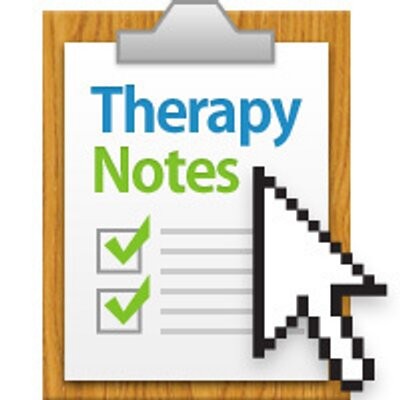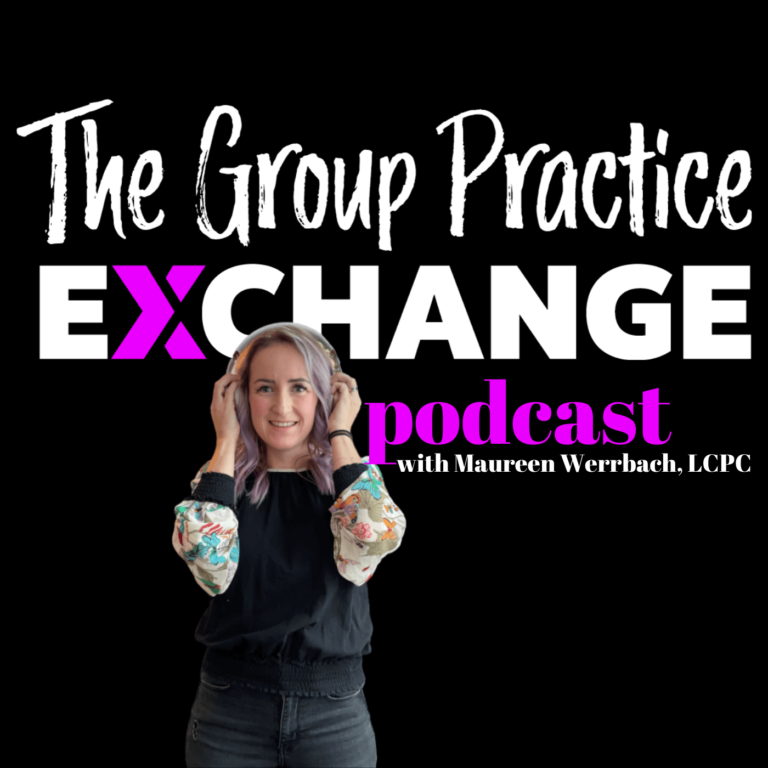Post Views: 184
- Home
- Podcast
Episode 239 | From Goals to Action: Structuring Leadership Meetings for Tangible Results

WITH Maureen Werrbach
00:00
00:00
- Episode 239 | From Goals to Action: Structuring Leadership Meetings for Tangible Results 00:00
Share
Have you been diligently tracking metrics and setting goals for your practice, but are still stuck not seeing visible results?
In today’s episode I took a deep dive into how to actually get your team to take action to make progress toward your practice’s goals. Because success doesn’t come from setting goals or tracking metrics; it comes as the result of the actions we take based on the information we gather.
In this episode, I focus on the importance of action in achieving our objectives as group practice owners. I discussed the significance of leadership meetings, not just as a formality, but as a platform to celebrate our successes, assess our journey, and activate our team for action. I also explain the need to distill our larger goals into smaller, more manageable tasks, setting quarterly and biweekly milestones to keep us on track. If you have some big goals for your group practice that you’re ready to set in motion, join me to learn more about:
- The role of action in driving tangible progress and results within a group practice
- Sharing an effective structure of leadership meetings that result in action taking
- How to regularly assess where your team stands in relation to practice goals to help maintain focus and direction
- Exploring the concept of breaking down large goals into smaller, manageable steps in your practice
- Examples of how a practice might use their accountability tracker including examples of yearly goals, quarterly goals, and biweekly action items
Remember that setting goals is just the beginning. It’s the consistent, deliberate actions we take that will lead you to success in your group practice. Let’s keep moving forward, one step at a time!
Thanks for listening! Like what you heard? Give us 5 stars on whatever platform you’re listening from. Need extra support? Join The Exchange, a membership community just for group practice owners on our website www.thegrouppracticeexchange.com/exchange. Talk to you next time!
Resources mentioned in this episode:
Connect with Maureen Werrbach & The Group Practice Exchange:
This episode is sponsored by TherapyNotes. TherapyNotes is an EHR software that helps behavioral health professionals manage their practice with confidence and efficiency. I use TherapyNotes in my own group practice and love its amazing support team, billing features, and scheduling capabilities. It serves us well as a large group practice owner.
Do you ever wish for a financial therapist who could relieve you from the last few months of bookkeeping, talk you off the edge when you’re running into issues with Quickbooks, or help you work through a profit plan for growth? GreenOak Accounting does just that! GreenOak Accounting is an accounting firm that specializes in working with group practices. Their value goes WAY beyond bookkeeping; they can help you get on track for financial success. Schedule a free consultation by going to http://greenoakaccounting.com/tgpe
Transcript:
Maureen Werrbach
Maureen Werrbach (00:00:01) – You’re listening to the Group Practice Exchange podcast, where the business development resource for group practice owners, where we talk candidly about business ownership and leadership. I’m your host, Maureen Werrbach.
This episode is sponsored by Therapy Notes. Therapy notes is my favorite EHR, and it’s one that I’ve been using in my own group practice since 2014. They’ve got everything you need to be successful in your group practice, and they’re constantly making updates and have live support. If you want two free months of therapy notes, go to therapynotes.com/r/thegrouppracticeexchange.
Need a new accountant, bookkeeper or fractional CFO? Green Oak Accounting is an accounting firm that works specifically with private practices. I’ve been using their fractional CFO services for many years in my own group practice, and I couldn’t grow my business without them. Mention TGPE to get $100 off your first month.
Hey there podcast family, welcome back to the TGP podcast. Today we’re delving into the heart of accountability, the often overlooked and other estimated step that can either make or break your practice.
Maureen Werrbach (00:01:26) – It’s what I call the fifth step in the accountability equation. And it’s all about taking action. You know, in the business world, tracking metrics is like having a GPS for your practice. But here’s the thing many business owners get lost in this data maze. They track metrics, but they do nothing substantial with them. No regular check ins, no actionable steps, nothing. And that’s where the fifth A, action comes in. And it’s the final piece of the accountability equation. So I want to start with a bold statement. There’s no accountability without action. You can set goals. You can assign accountabilities, you can track metrics. But if you don’t take meaningful action based on all of that information, it’s like having a roadmap but refusing to drive. I believe this is how many group practice owners manage their business right now. And not only is it just a haphazard mistake, it’s a detrimental one because it leads to accountabilities not being met and feeling like you’re paying to have a team lead your practice with no visible results.
Maureen Werrbach (00:02:31) – And I know a lot of you probably have this experience. So a crucial aspect of action within a mental health group practice is leadership meetings. They’re not just status updates. They’re your team’s chance to align, resolve issues and keep those quarterly goals on track. The meeting is a powerhouse, but only if you leverage it, right. Obviously, many of us have engaged in leadership meetings or team meetings that feel very purposeless, or where it’s a really circular and the same issues are consistently coming up at every leadership meeting. In the accountability equation, the action component in how you deal with your leadership team meetings looks very different and it makes it impossible for this to happen. So let’s break down an effective agenda for leadership meetings that’s inspired by the accountability equation. So first we have what we call the celebrate section. And it’s where we take about five minutes to share wins. It can be personal. It can be professional. And it’s meant to set the tone, build team connections. And most importantly it’s not a status update.
Maureen Werrbach (00:03:43) – We’re limiting it to five minutes because we want to ensure that we’re not wasting everyone’s time, and that everyone has enough time to get into the meat and potatoes, or the important areas of the business that needs to get work done. Next in the accountability equation meeting is that you have what’s called the accountability tracker and dashboard update. You’re going to spend again, no more than five minutes reviewing your past week’s goal performance. And this is the moment to identify if anything is off track. So each team member is going to own their updates. And if something’s askew, it’s going to go on what we call the discussed list later. So this right now isn’t the time or place to explain the why behind an accountability, being off track or not met. It’s simply you saying on track or off track that will suffice. This tends to be the first difficult part of these meetings when you first start the accountability equation, because we all want to explain why we’re off track, but it’s not important to the whole story, especially when what you or another leader might be off track on.
Maureen Werrbach (00:04:51) – It’s really that person’s responsibility. Meaning that’s the only person that needs to know the why behind it being off track, because they’re going to be the ones to fix it. So using the meeting to explain the why only waste time. You’re then going to shift into goals. Goals are the quarterly broken down accountabilities. So we have our accountability tracker and that shows what the accountabilities are for everyone on the leadership team for the year. We break those down into quarterly goals. So in these five minutes you’re going to review those quarterly goals. It’s a reminder of where your practice is headed. And it’s a chance to check progress again. A simple on track or off track is all you’re going to need during this part as well. We then shift into our to do list, and again, in this part we’re only spending five minutes on it. We’re going to check on any action items that were from the previous meeting that we were all accountable for, and make sure that those things were done. We’re going to assign any upcoming or new to do items as well to each person on the leadership team, and a due date for each of those tasks when those things need to be done.
Maureen Werrbach (00:06:02) – If something is off track, we’re going to put that again. Like I said on the discuss list, which we talk about next. So the meaty part, the discussed list is an hour long. This is where all the magic happens. We’re going to prioritize and solve the top three issues. What I found is that everyone on your leadership team might have five different issues that they want to talk about, that they feel like is important, but have you ever noticed that it is literally impossible to get through all of those things and resolve them? So we’re going to prioritize. Your team as a whole is going to prioritize and solve the top three issues. Each leader has a chance to add things to this discussed list. And then when you get to this part of the meeting as a team, you will decide which top three things that are listed are the most important to work through in that day’s meeting. The rest are either going to get their time in the next week’s leadership meeting, or they will resolve themselves on their own.
Maureen Werrbach (00:07:03) – As that usually happens. What happens often is that leaders end up fixing things on their own that they want to discuss, but then they end up being able to fix them on their own anyways. So an issue is considered resolved if a decision is made or to do comes out of the discussion. So in this section you have your top three things that your leadership team decides is the most important things to work on and how you know that it’s time to move to. The next thing is that there is either a resolve or another to do is made that will lead to a resolve later. So if there’s an issue that’s just a really big issue, and there’s a step that needs to be taken to get closer to resolving the issue, you’re gonna list out who that step belongs to and the time frame for when that step needs to be completed. And as far as that meeting goes, that issue has been resolved. Because next week you’re going to look at that to do list and say, did that part of the to do list get resolved.
Maureen Werrbach (00:08:03) – And now what’s the next step? So then the last part is our conclude segment, which really is more about reviewing any action items that have come up in that meeting. Going through them really quickly and saying, okay, so and so said that you’ll do this by this date, right? Yes. And so and so you said you’re going to do this thing or you’re going to reach out to this person by this date, correct? Yes. And you’re just going down the line making sure that every action item that’s come up with and someone who’s accountable to it, that everyone’s agreeing to it, and we’re all typing this out so that there’s a record of it. So leadership meetings are your powerhouse. But remember, there’s no accountability without action. It’s about turning discussions into real, tangible progress. Use your discuss list wisely. It’s your action plan in the making. That’s how I like to think of it. When we put all of the pieces of the accountability equation together, you end up having a really clear framework for holding your team accountable and succeeding.
Maureen Werrbach (00:09:04) – So put those pieces together. Accountability is fine and dandy and a necessity in business, but most businesses have difficulty reaching overarching accountability results because those are yearly goals. And usually they’re really large goals that require a lot of steps to actually attain those goals. So those overarching results in the accountability tracker by themselves are hard to reach. So a great way to break that down is to have quarterly goals that are a way to reach that yearly accountability, and then to break that down even more. Your quarterly goals, you have biweekly action items. So I do my leadership meetings bi weekly. You might decide to have your leadership meetings weekly, which means you’ll have weekly action items. Research shows time and again that breaking down larger goals or expectations into smaller, bite sized pieces helps individuals reach those larger goals. So quarterly goals are like those micro goals that help leaders get closer to reaching those larger, overarching accountability goals, and then breaking it down even further. During your weekly or biweekly meetings, you’re going to list out any action items that can be completed in a week or two weeks time frame that helps you or your leaders reach those quarterly goals.
Maureen Werrbach (00:10:25) – You see how that flows. I want to give an example. So practice A has an accountability tracker, right. And the person who does recruiting and onboarding has a goal to hire for the year on their accountability tracker, has a goal to hire additional staff that brings the practices total clinician count to 13 above what they had at the beginning of the year. After reviewing the HR metrics to see that the average amount of clinicians who leave that practice is about three per year, the onboarding lead now knows that they need to hire four new staff this quarter, right? If they have to have 13 above how they started in that year, let’s say they had 20 and they need to get to now 33 by the end of the year. That’s 13 more. And they now know, after looking at HR metrics that about three people leave a year. This isn’t a perfect science, because you can always have a moment where more people leave or less people leave. But if you are tracking metrics, you can kind of see what that average is.
Maureen Werrbach (00:11:27) – So the HR person sees or the onboarding person sees at about three people leave per year, and that lets them know that about one per quarter ish leaves, which means that they need to hire a four staff in that quarter, because that would be four, eight, 12, 16 staff. So that’s a little bit above 13 in the whole year. They can review and make changes to that amount in the future if more or less clinicians leave than expected. But it becomes the goal for quarter one at least. And if they realize after hiring four new people that six people left, they can now adjust one quarter two goals to account for the extra loss. Or if no one left in quarter one and they hired four people, that person now knows that their goal for quarter two does not have to be four. It can be 2 or 3. So let’s say then during one of the biweekly leadership meetings, one of the action items for the importing lead is discussing hiring provisionally licensed folks because they realize that they’re having a harder time since Covid, finding enough fully licensed folks that want to apply to the practice.
Maureen Werrbach (00:12:36) – Right. So part of this is okay, as the onboarding lead, I’m noticing I’m having a hard time reaching my accountability for the year of hiring 13 additional clinicians above where we were at at the beginning of the year. And if there is a dip in hiring or changes to the economy that is impacting that onboarding coordinator from being able to bring in the amount of clinicians they need to one of the biweekly action items might be that that person discussed. Nurses adjusting who the ideal clinician is. Maybe they’re coming up. And in this example, they’re coming up with the idea of starting to bring on provisionally licensed folks or interviewing them because they realize the way the industry is right now, bringing on 13 fully licensed therapists in the year might not be as attainable as it once was. You see how breaking that yearly accountability of 13 additional clinicians above what they had at the beginning of the year. Turning that into a quarterly goal after realizing that they lose about one clinician a quarter, that they’d have to hire about four clinicians per quarter to actually meet that goal, but then realizing if in a quarter they’re having a hard time in one of their biweekly meetings, it might be that their goal is to shift who their ideal client is so that they have a better chance at reaching those goals.
Maureen Werrbach (00:13:56) – It’s going to take time for your leadership team to feel comfortable with the new leadership meeting agenda. It’s likely that your team is used to unorganized or unstructured meetings, and this system can seem a bit corporate and unfriendly at first. But while you can still prioritize socialization and connection, you also highlight not wasting time and meetings, going in circles without direction or no decisions being made. Reminding your team of this and it eventually becomes habit, I swear. So as we wrap up today’s episode, remember that accountability isn’t a standalone concept. Your accountability tracker is interconnected with quarterly goals and biweekly or weekly action items. By breaking down those larger goals into bite sized pieces, you’ll be able to see the gears of accountability actually in action. So if you have not yet engaged in our program, the accountability Equation, I encourage you to look at our show notes and you’ll see two links in there. One of them is to take our free Accountability Equation quiz. It’ll let you know which of the five A’s your business is most struggling with.
Maureen Werrbach (00:15:06) – And if you end up deciding that you actually want to take an action step and enroll in the Accountability Equation Group program, the link in the show notes will be to that as well. See you next week. Thanks for listening. Give us five stars on whatever podcast streaming service you use and I’ll see you next week.
Thanks For Listening
Thanks for listening to the group practice exchange podcast. Like what you heard? Give us five stars on whatever platform you’re listening from. Need extra suppor? Join The Exchange, a membership community just for group practice owners with monthly office hours, live webinars, and a library of trainings ready for you to dive into visit www dot members dot the group practice exchange dot com forward slash exchange. See you next week.
Resources
Here are the resources and guides we recommend based on this episode

Specialized Accounting for Private Practice
At GreenOak Accounting, we offer accounting services that cater specifically to solo and group therapy practices. Our services range from bookkeeping to budgeting & forecasting, Profit First support, profitability analysis, payroll, tax preparation, compensation analysis, and much more.
Through working with over 100+ therapist clients, we have seen what works and what doesn’t, so our team can help guide you on the path to financial. Our specialized services can be customized based on the size and needs of your private practice.
For more information about our packages and the different ways to work with us, please visit our website at https://www.greenoakaccounting.com/ and schedule a complimentary consultation with one of our team members!

*Need a good EHR for your group practice? TherapyNotes is it. I’ve been using it for years in my own group practice, and it does really well when it comes to having the features group practice owners need. Try it out for FREE for 2 months by clicking here.
* I am an affiliate for some of the businesses I recommend. These are companies that I use in my own group practice, and make recommendations based off of my experience with them. When you use some of these companies through my links, I receive compensation, which helps me continue to offer great free information on my podcast, blog, Facebook group, and website.
Related Episodes
Meet your host
Maureen
Maureen Werrbach is a psychotherapist, group practice owner and group practice coach. Learn more about her coaching services here:
About
The show
The podcast is structured so that you get practice building tips in small doses, where an episode can be listened to (and a group practice building lesson can be learned) in a single car ride.
Episodes are structured into categories: coaching sessions where I coach a group practice owner on a specific topic, tips of the day by yours truly, real talk where you get to be a fly on the wall while an established group practice owner and I talk about the highs and lows of ownership, and trainings done by experts in the field.
Don’t miss an episode! Download The Group Practice Exchange Podcast on iTunes, Stitcher or Google Play and don’t forget to subscribe and rate TGPE
* The content of this post is intended to serve as general advice and information. It is not to be taken as legal advice and may not account for all rules and regulations in every jurisdiction. For legal advice, please contact an attorney.





